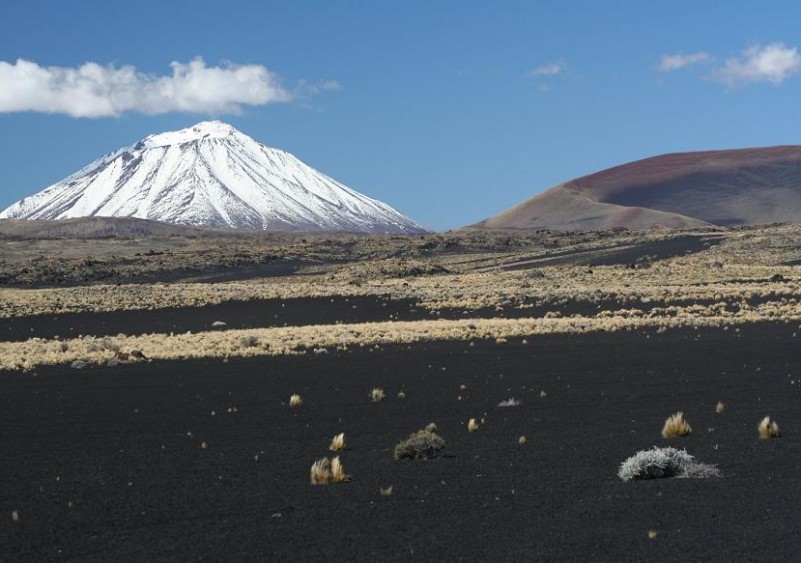The Payunia is a natural reserve located in the department of Malargüe. It is accessed through National Route 40 and then Provincial Route 186, and is 160 km from the city of Malargüe. The Payunia is a special case in terms of volcanic activity is concerned: it has a concentration of more than 800 volcanoes, making it one of the areas with concentration of volcanic planet, counting on average 10.6 volcanoes every 100 km2.
The first sign of volcanic activity are called the Pampas Negras, a great plain of black volcanic sand with pebbles fragmented lava, when the sky is cloudy generates a “day night”. There also exists the field pumps, a land full of spheres of all sizes. These are pieces of lava that apparently flew out of the craters in its explosion, and retained their spherical forms a cold time.
Most volcanoes Payunia have no name, despite many. One of the best known is the Volcano Payún Plain, being the highest, with 3680 meters. It has a uniform conical shape, so it is more like the usual representation of volcanoes. Another important find is the Volcano Volcano Payún Matrú, almost the same height, which has a boiler nine kilometers in diameter. The peak boiler left him to explode, and allows them to meet inside. It has a lagoon inside.
The Purple Volcano is another interesting option. The edges of the volcano no longer cutting edge and form a large depression inside, so let walk through the crater. You can also visit the Malacara Volcano, which is already outside the reserve, 42 km from Malargüe. The volcano has the distinction of being hydromagmatic origin, ie, it was formed by the eruption of water that formed very high passages and gullies that can be crossed.
Photo: Web.






